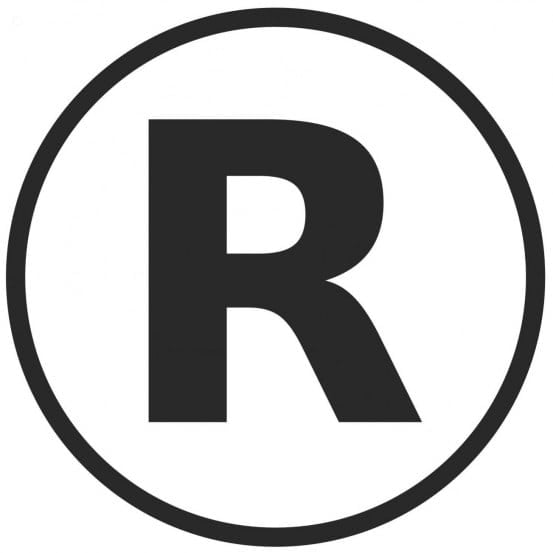
How to Trademark Your Business
Small business owners and entrepreneurs often ask me when they should trademark their business name. My answer is always the same… “Now.”
The next question that usually follows is “why”. Very simply, I tell them that trademarking your name and brand can save trouble and money later.
If you are going to spend the time and energy building your brand, it makes sense to assure that no one else has used the same or similar mark first. Often, I see that someone waits too long to file a trademark application only to find that someone else registered the name first.
Let’s use Judy as an example. Her business, Pupcakes, makes cupcakes for dogs. When Judy decided to file a trademark application, she went to the United States Patent and Trademark Office (USPTO) Web site to register it, she discovered someone had beaten her to it.
Luckily, Judy had been using the name longer than the person registered on the USPTO site. The United States is a “first to use” country, meaning that the first person who uses the mark gets the right to use it. She had used the mark for two years before the registrant. Unfortunately, it will cost her three times the money to cancel the other Pupcakes mark so that she can file her own. If she had filed sooner, it would have cost her less.
It could have been worse, however. If the person who had registered the mark before Judy had held it for five years, she could not have canceled it. The first person to hold the mark for five years has incontestability – no one can challenge the ownership. Judy would either have to accept that another business uses her name, or she would have to change her own mark.
Getting Started
To begin, you must first identify if your mark warrants protection.
There are three different types of marks that warrant varying types of protection:
- Descriptive marks offer a narrow scope of protection and sometimes they don’t qualify for protection at all. For example, The Weather Channel is a descriptive mark that describes its services: it is a channel that offers the weather. The rationale for not offering protection to such a mark is that another entity should not be precluded from calling a channel related to the weather, The Weather Channel. Through much time, money and effort, The Weather Channel was finally able to achieve protection for the mark. But this is not a process that a small business would want to undertake.
- A suggestive mark receives stronger protection. Groupon, for instance, is a suggestive trademark. Its name is a combination of “group” and “coupon,” which suggests the service it provides, but with a more fanciful title, thus giving a stronger protection to its brand.
- The strongest trademarks are those that are arbitrary or coined. Google and Amazon are very strong brands because their names have no association with the services being sold, even though those words exist as descriptions of something else.
Choosing Your Search
One of the first things to do is conduct a trademark search to weigh the risks you are taking in adopting and using your mark. A clearance requires analysis of the rights of third parties. You have a variety of options for your search, depending upon the amount of risk you wish to take, and money you have to invest. The first is a full search conducted by a formal search company and overseen by an attorney. This is the most costly. Another is an attorney-conducted search, which is less comprehensive than one performed by a search company. It is about 75 to 80 percent accurate if performed by the attorney on a special platform license by a search company. Not all attorneys have this type of platform, usually just the ones who specialize in handling trademarks. If you choose this route, make sure your attorney is not just searching your mark on the USPTO Web site. That search would be less accurate.
Another approach to consider would be conducting your own search. In doing this, you must accept that it will be less comprehensive. If you do a search on your own, various Web sites can be helpful. One is www.uspto.gov, which will show federal applications and registrations. Another is www.copyright.gov, the official site of the United States Copyright Office, which contains copyright registrations.
Knowing What to Search For
Very simply, you want to search for your exact mark – your brand name or store name, for example – but remember marks do not need to be identical to pose an issue. A mark could be a problem if it has a similar commercial impression to yours. A dictionary and a thesaurus can help find words that contain a similar impression to your own mark. Let’s use the name Chat Mat as an example. Synonyms for the word “chat” include “talk” and “gossip.” Any of these similar words in combination with “mat” could be an obstacle to registering your mark.
Analyzing Your Search Results
Say you wanted to trademark your business name as Courtyard Pet Supplies. Your search would find the Courtyard chain by Marriott, but it would also find at least 10 other businesses with the word “courtyard” in the name. With so many co-existing marks for so many goods and services, there is a possibility your mark could co-exist, so long as it does not overlap with the prior Courtyard marks.
The fact that so many co-exist means that each Courtyard mark will get a small piece of the “pie” for their specific goods or services. Be careful. This may mean you cannot expand your business, as you may then overlap with another Courtyard mark.
On the other hand, say you wanted to register Google Pet Supplies. Your search would obviously turn up the company Google, which has very strong rights because there are very few or no co-existing marks. Google basically owns the entire “pie” because the business has such a strong identity and can easily protect itself. Google would likely issue a cease-and-desist letter if you wanted to name your business Google Pet Supplies.
Filing a Trademark Application
This can be done on the USPTO Web site. You can choose a $275 application (based on 2014 rates) where you select goods and/or services that have been predetermined by the USPTO, or an application for $325 (2014 rate) that allows you to freely include the goods and services you wish to cover. Also, you must decide whether you want to file an application based on use. If you have not used your mark, filing an intent-to-use application would hold your place on the register.
There are benefits to registering your trademark in addition to the incontestability of ownership after holding it for five years. You gain nationwide rights as of the filing date, which will prevent others from using or registering similar trademarks.
Note, however, that after it’s registered you must also take care to protect your trademark. If you don’t, you can lose your rights. It is also very important to remember that between the fifth and sixth year after filing you must prove use of your mark. And renewal is due at 10 years and every 10 years afterward.
In conclusion, remember that it is inexpensive to search, clear and register your trademark, versus the costs associated with defending a litigation. When you decide to register, have a qualified attorney help you assess the risks. There is no substitute for solid legal guidance.
Contributed by Laurie Marshall, owner and founder of the Marshall Law Group (TradeMarks The Spot), which helps entrepreneurs protect their intellectual property. She has been a trademark attorney for over 17 years, including 10 years as Major League Baseball’s in-house counsel. She speaks on Trademarks for Entrepreneurs throughout New York City and is a Venture in Residence at the NYIT Entrepreneur Center.
Laurie Marshall will be a speaker at the Independent Retailer Conference at the ASD Show in Las Vegas in March 2014, as well as at the Independent Retailer Conference in New York City in April. Learn more here!














